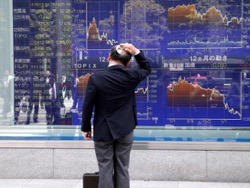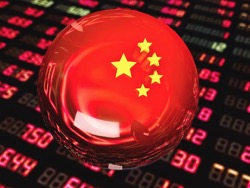
Global investors for a long time closely watching China’s economy, hoping that the authorities will be able to maintain a high GDP growth rate.
In the first quarter of 2016, China’s GDP increased by 6.7% compared to the same period last year. All this is fully consistent with the forecasts announced previously, moreover, continued the trend stated in the previous five reports on GDP, where the numbers were either met or exceeded expectations of 0.1%.
This pattern is generally erratic and irregular in itself, which has led many financial market participants perceive it quite skeptical.
Do you believe in the validity of the indicators of economic growth put forward by the government, on the agenda there remains the question, which occupies many investors will justify China its reputation as the locomotive of the world economy.
Chinese “bulls” seems to have almost completely replaced the “bears” – such a sharp turn, but just a few years ago everyone praised the economic power of China.
Academician of the new York University Roy Smith, who witnessed breakneck growth in the past decade, believes that the rapid growth of China’s economy is coming to an end, drawing Parallels with the build-up of nonperforming loans in Japan in the late 1980-ies.
“China has repeated the economic development model of Japan, and now may be faced with a financial crisis, as a result lose control and can’t become the next superpower of Asia,” said Smith.
As in Japan, concern about the rapid accumulation of debt in China may lead to a full blown banking crisis that will hit the largest banks in the country.
By the end of 2015 the total debt of China’s realities and netaniahu shadow Bank financing, Bank loans, amounted to 308% of GDP, according to analysis of senior economist for Asia at National Australia Bank Gerard Burg. According to the National Bureau of statistics of the PRC is equivalent to the debt is nearly $30 trillion.
The following graph shows a sharp increase in the debt of China to GDP over the last decade is primarily due to the huge growth of lending from the shadow banking system. Moreover, according to the latest figures of the people’s Bank of China, in March was recorded a sharp jump in lending new loans increased by 1.37 trillion yuan, a record value since 2004, with the exception of the January data.
Volume of financing of social expenditures – the General liquidity ratio, which includes loans from non-traditional sources, including shadow banking sector has grown on 2,34 trillion yuan, compared with 780,2 billion yuan in February.
Is it any wonder economic growth of 6.7%, while the growth of loans of such magnitude?
Recent economic indicators, such as the price of new housing and long-term investment – clearly the newly created loans that found their way in the real estate market of the country.
The government, apparently, is the main engine of growth for 2016 has selected the real estate market, which for about five consecutive years in a row suffers from a surfeit of unsold resources in small towns of China.
It’s not quite what you expect from the “new” economic model of consumption in China.
As noted earlier this week, senior editor of the financial section of the portal Business Insider Lynette Lopez, is an old China – state sectors, involving the collapse and restructuring is needed to save the world with its incredible growth machine.
“GDP data published by the Chinese government, it became clear that the authorities are not quite ready to get this over with,” said Lopez.
Wei Yao from Societe Generale assumed that the acceleration of credit growth and restoration industries, shows all the signs of an unprecedented number of incentives adopted by the Chinese government, fearful of recession.
“It’s kind of like an old-fashioned loan and investment recovery, which is strangely reminiscent of the events taking place in 2009. The consequence was inflation, asset bubbles and excess capacity,” she writes.
Not exactly what China needs, not to mention the global economy.
Despite all the talk from the government about the need for reforms, be it financial markets or any particular industry, in reality, all of this is missing.
Instead of continuous reform, all we have seen so far, is a series of attempts to stimulate economic growth in the short term, in the same manner as in 2009-2012,, and when have any of the problems the economy is struggling still.
Like others, Smith suggests that politicians should “look much farther to conduct reforms that will allow the economy to be shaped by market factors in the future.”
At the same time, along with the fact that on the balance sheets of Chinese banks accumulate toxic assets, and debts grow.
Ongoing risk “of japanisation” the Chinese economy will continue to grow, as well as the risks of a deeper slowdown in the world economy.








